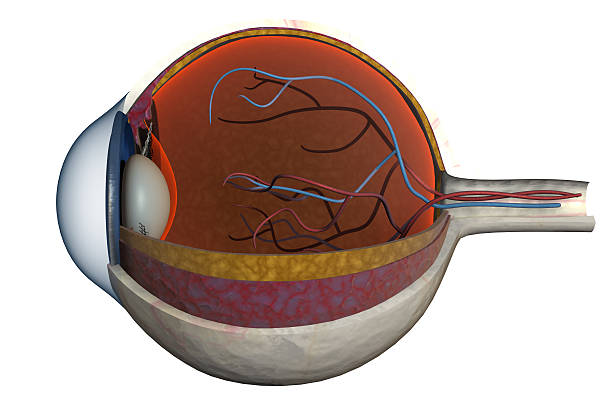Epiretinal membrane (ERM) is an eye condition that can significantly impact your vision, causing symptoms ranging from mild blurriness to severe visual distortions. The good news is that treatment options are available to restore your vision clarity. In this blog, we will explore how various treatments for epiretinal membrane can help you regain clear vision.
Understanding Epiretinal Membrane

Epiretinal membrane refers to a thin, fibrous layer that forms on the surface of the retina, often leading to visual disturbances. This membrane can contract and cause the retina to wrinkle, leading to distorted and blurred vision. ERM typically affects individuals over the age of 50, but it can also occur in younger people due to eye injuries, inflammatory conditions, or other retinal disorders.
Symptoms and Diagnosis
The symptoms of epiretinal membrane can vary from person to person. Common symptoms include blurred or distorted vision, difficulty reading small print, and noticing wavy or crooked lines when looking at straight edges. If you experience any of these symptoms, it's essential to seek a professional eye examination. Specialty Eye Vision Care for Retina Issues offers comprehensive diagnostic services to accurately assess the presence and severity of ERM.
Diagnosis typically involves a detailed eye examination, including optical coherence tomography (OCT), which provides high-resolution images of the retina. OCT is crucial for diagnosing and monitoring the progression of epiretinal membrane.
Non-Surgical Treatment Options
In the early stages of epiretinal membrane, non-surgical treatments may be sufficient to manage symptoms and improve vision clarity. Prescription glasses or contact lenses can help correct refractive errors and enhance overall vision. Additionally, incorporating bright lighting and using magnifying aids can alleviate some of the visual difficulties caused by ERM.
Though non-surgical treatments do not remove the membrane, they can provide temporary relief and improve your quality of life. Regular monitoring by a retinal specialist is essential to determine whether more aggressive treatment is necessary.
Surgical Treatment
When symptoms become severe and significantly impact daily activities, surgical intervention may be the best option. Vitrectomy is the most common and effective surgical procedure for treating epiretinal membrane. This minimally invasive procedure involves removing the vitreous gel from the eye and peeling away the fibrous membrane from the retinal surface.
Vitrectomy is typically performed on an outpatient basis under local anesthesia, and it has a high success rate in improving vision. During the procedure, tiny incisions are made in the eye, and specialized instruments are used to safely remove the vitreous gel and membrane. The eye's natural healing process helps restore the retinal surface, leading to improved vision clarity.
The Role of Advanced Technology
Advancements in surgical technology have significantly improved the outcomes of vitrectomy for epiretinal membrane treatment. Modern techniques, such as microincision vitrectomy surgery (MIVS), use smaller instruments and incisions, reducing surgical trauma and promoting quicker recovery. Enhanced visualization systems, including high-definition imaging and intraoperative OCT, provide real-time, detailed views of the retina during surgery, ensuring precise membrane removal.
Patients undergoing vitrectomy can expect a relatively rapid recovery period, with significant visual improvements often noticeable within a few weeks. During post-operative care, it is crucial to follow all prescribed guidelines and attend regular follow-up appointments to monitor healing and address any potential complications.
Post-Surgical Care and Recovery
Effective post-surgical care is crucial for a successful recovery and optimal visual outcomes. Following vitrectomy, your eye specialist will provide specific instructions on using prescribed eye drops to prevent infection and reduce inflammation. It's important to avoid strenuous activities and any action that could put pressure on the eye, such as heavy lifting or bending over.
You may experience mild discomfort, sensitivity to light, and temporary vision fluctuations following surgery. These symptoms typically subside within a few days to weeks. Regular follow-up appointments with your retinal specialist will ensure that your eye is healing properly and that any complications are promptly addressed.
Long-Term Vision Care and Maintenance
Maintaining clear vision after epiretinal membrane treatment requires ongoing eye care and monitoring. Regular eye examinations are essential to detect any changes in your retinal health and to address other potential vision issues. A healthy lifestyle, including a balanced diet rich in nutrients beneficial for eye health, can support long-term vision clarity.
Using protective eyewear to shield your eyes from UV rays and avoiding activities that may cause eye injuries are also important preventive measures.
Conclusion
Epiretinal membrane can significantly impact your vision, but with the right treatment, you can restore clarity and improve your quality of life. From non-surgical options to advanced vitrectomy techniques, various treatments can address the symptoms and underlying causes of ERM. Trusting your eye care to specialists experienced in retinal issues ensures you receive the best possible care and outcomes.